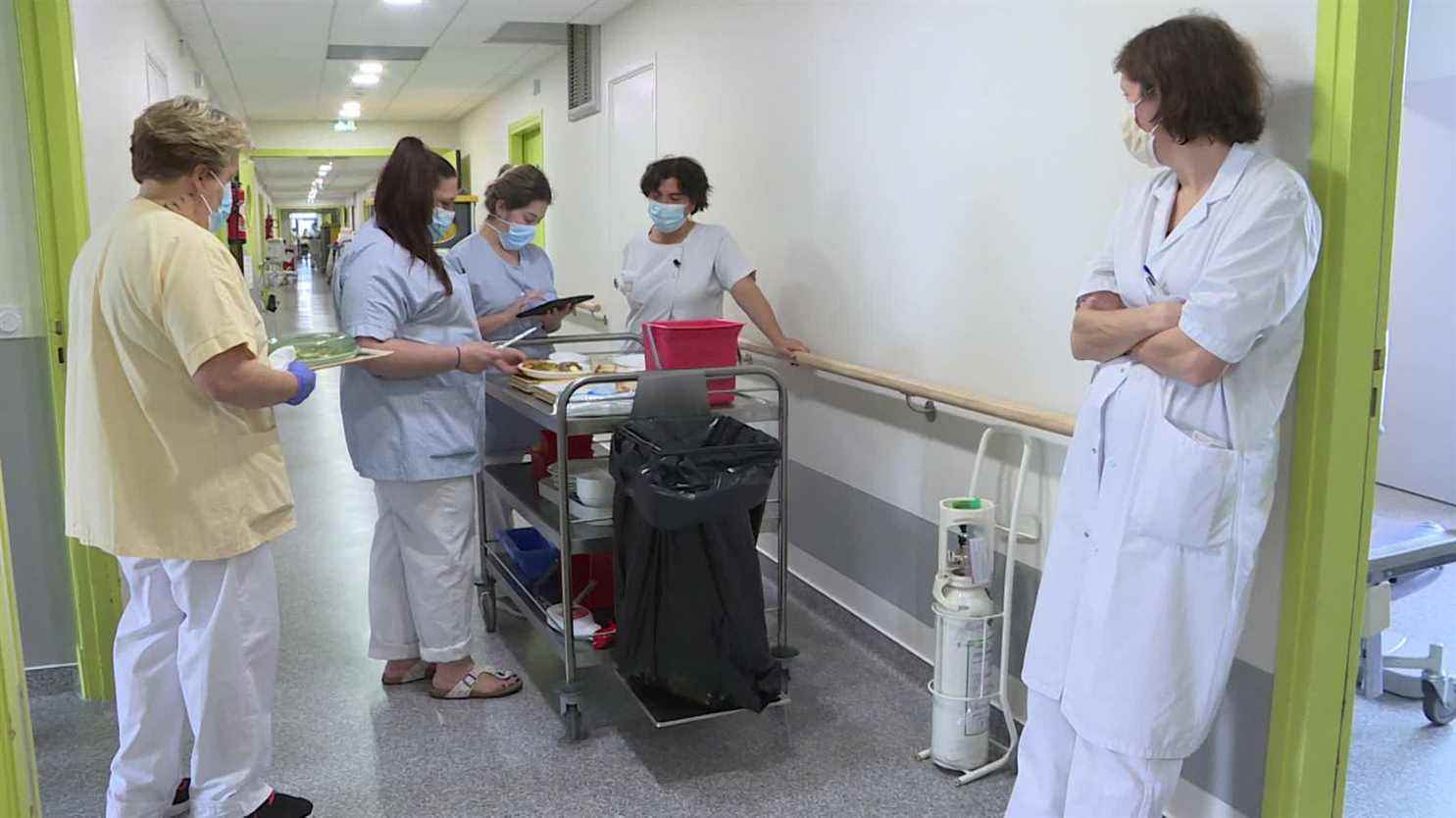“Digital ingesta statement by board elements”. Admittedly, the title of the project is neither glamorous nor very meaningful to the general public. But it was with him that the team of the CLAN (Food and Nutrition Liaison Committee) of the Mauriac hospital center won the Prize for the best initiative 2021 in the category of establishments with less than 500 beds at the French-speaking Days of the nutrition 2021.
This project is based on an alarming observation: the elderly are victims of undernutrition. The word designates a pathological condition in which the body’s energy or protein needs are not met. It results in rapid and involuntary weight loss (more than 5% of your weight in a month or 10% in six months). According to Dr. Marie Blanquet, head of the clinical research unit at the Mauriac hospital center and winner of the Société Francophone de Nutrition prize “6% of people over 75 who arrive at the hospital are chronically undernourished”.

Concretely, the device led by Marie Blanquet is simple: examine patients’ plates every day to see which foods are (or not) in their favor and carry out a targeted assessment of the nutrients that may be lacking.
For this, the project is based on a collective catering software in which 1168 ingredients have been entered, with the grams of protein that corresponds to them, the kilocalories, the intake of vitamins, magnesium, calcium and phosphorus.
After each meal for each patient, everything is entered into a database. A much more detailed statement than before: “Before, recalls Marie Blanquet, theingesta surveys [ndlr : l’ensemble des matières alimentaires introduites dans l’organisme] were done on the whole tray, like ‘they ate half the tray’. Except that if the patient eats the starter and the dessert, that doesn’t interest me because in terms of calorie and protein intake, there is almost nothing. On the other hand, if this eaten half of the tray designates the main course, the patient has the caloric intake of ¾ of the meal. This item-by-item survey now allows us to be extremely precise. “

The support is therefore much more personalized. “If we observe that a patient rather consumes starters, desserts and not at all the main course, we will try to organize our support to allow him to cover his needs, either by dividing and multiplying the food intakes, either by giving him what he has as food preferences “ explains Véronique Neves, dietician in the hospital.
And since everything is mapped out, the general practitioner can follow what is done on his patient and ensure continuity once the latter returns to his home.
This work on undernutrition is essential for the health of the elderly. Because it is a real disease all the more dangerous because it is insidious. About 10% of people over 70 at home would be affected but also 30% of patients in hospitals, 40% of cancer patients, and 30 to 40% of nursing home residents, i.e. more than 2 million people each. year !
Undernutrition can lead to a disease little known to the general public: sarcopenia, which refers to a loss of muscle mass associated with a decline in muscle performance and strength. The danger ? With muscle loss, the risk of falling is increased. Undernutrition can also lead to the appearance of very deep and painful bedsores which further complicate the lives of patients.
But undernutrition is not inevitable. You can lose your appetite but still maintain a satisfactory weight. To do this, the Mauriac hospital has set up a partnership with the Norman company Nutriset, which specializes in nutritional foods intended to treat malnutrition. It has developed a specific product, called Appétit’mix®.

Presented in the form of a paste, it is diluted by the hospital cooks in savory or sweet preparations according to the taste of each patient. It is a high protein and high calorie aid, enriched with vitamins and minerals. A dose of 80 gr provides 30 gr of protein and covers a third of the nutritional intake recommended for essential vitamins and minerals for the elderly.
But for some specialists, combating undernutrition must also involve better monitoring of elderly and frail patients. It goes through very simple things like weighing them regularly. A weighing which, in medical practice as in hospital, is not systematic. This is what several specialists recalled in a column published in November in the Journal du Dimanche on the occasion of the national week of undernutrition (from November 12 to 20) and in which they proclaimed that he was “possible to end undernutrition”
